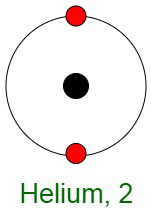稀有气体
惰性气体在化学上是不活泼的。稀有气体,也称为惰性气体,是第 0 组元素。惰性气体有六种类型:氦(He)、氖(Ne)、氩(Ar)、氪(Kr)、氙(Xe)和放射性氡(Rn)。惰性气体是属于第 18 族的元素类型。在标准温度和压力条件下,所有惰性气体都以物质的气态存在。
惰性气体的性质
- 惰性气体是无味、不易燃、无色的单原子气体,化学反应性可忽略不计。
- 化学反应性低
- 正常情况下不易燃。
- 低密度
- 所有惰性气体都会导电和发出荧光,这在各种情况下都可用于维持稳定和安全的大气。
- 在水中,所有稀有气体都是不溶的。
- 因为它们有一个完整的八位字节,所以它们非常稳定。由于它们获得或失去电子的可能性较低,它们很少与其他元素反应以产生化学键。然而,总是有例外。在这种情况下,Xe 是个例外。氙气是一种稀有气体,可以与氟化物或氧化物结合生成化合物。



惰性气体的惰性
除了受到特定的极端条件外,稀有气体大多是非反应性的。因此,它们适合放置在应用中以避免不必要的反应。氢和氦是不形成任何化学键的中性化合物。某些其他化合物(例如氙、氪和氩)几乎没有反应性。
惰性气体的反应性顺序如下:
Ne < He < Ar < Kr < Xe < Rn ≪ Og
惰性气体对化学化合物氧表现出冷漠,例如,赋予惰性气体完全不可燃性。
为什么稀有气体是惰性的?
当元素发生反应时,它们的原子通过失去、获得或共享电子来完成它们的外壳。惰性气体惰性的主要原因是其原子的稳定电子构型。这意味着惰性气体的原子相对于它们的外壳是完整的,也称为价壳。它们没有表现出任何交换的趋势,即获得或松散电子。稀有气体不易形成化合物,不参与化学反应。因此,它们大多以单原子气体的形式出现。
换句话说,它们具有完全填充的外轨道配置,因此它们具有最小的能量。因此,据说惰性气体具有全电子构型。
惰性气体的应用
- 在白炽灯中使用氩气来防止炽热的钨丝氧化。
- 深海潜水员使用氦气作为呼吸气体,以防止氧气、氮气和二氧化碳(高碳酸血症)中毒。
- 在派对气球和飞艇中使用氦气作为提升气体。
- 惰性气体用于产生惰性气氛,主要用于电弧焊。
- 为了保护标本,
- 防止化学反应
- 有霓虹灯,另一个应用是氪大灯。
- 也用于激光器。
- 它还可用于冷却超导磁体。
示例问题
问题 1:为什么使用氩气作为“保护气体”?
回答:
Argon is used as a ‘shield gas’ while welding pieces of metal together. This is because argon is inert in nature, therefore, the hot metal does not oxidise and spoil the weld. Also, the air is stopped from getting to the metal.
问题 2:由于惰性,氢气主要用于何处?
回答:
Hydrogen is inert enough to be used in chromatography, for the separation of components from the mixture.
问题3:为什么电灯泡充满惰性气体并密封?
回答:
Electric bulbs are filled with noble gases like argon. The inert gases don’t react with the filament of the bulb. This prevents the evaporation of the filament and maintains the pressure inside the bulb. Air is not used because the filament in the bulb will react with oxygen and will burn because of high temperatures.
问题 4:为什么氦具有 1s 2构型,而所有其他稀有气体具有一般电子构型 ns 2 np 6 ?
回答:
All the noble gases, except helium, have eight electrons in their outermost orbit making its general electronic configuration is ns2 np6. Helium, in comparison, has two valence electrons.
问题5:为什么铁不是惰性气体?
回答:
Iron doesn’t have complete electrons in its valence shell. Therefore, it reacts with elements to form compounds, unlike noble gases. It forms compounds and achieves a stable configuration.
问题 6:说出与氙气反应的一些化合物以及形成的化合物是什么。
回答:
Xenon reacts with fluorine and oxygen to form fluorides and oxides respectively. Some compounds formed are xenon difluoride (XeF2) and xenon tetroxide (XeO4)
问题 7:给出不同类型的氟化物与氙气形成的反应。
回答:
Xe + F2 → XeF2
Xe + 2F2 → XeF4
Xe + 3F2 → XeF6